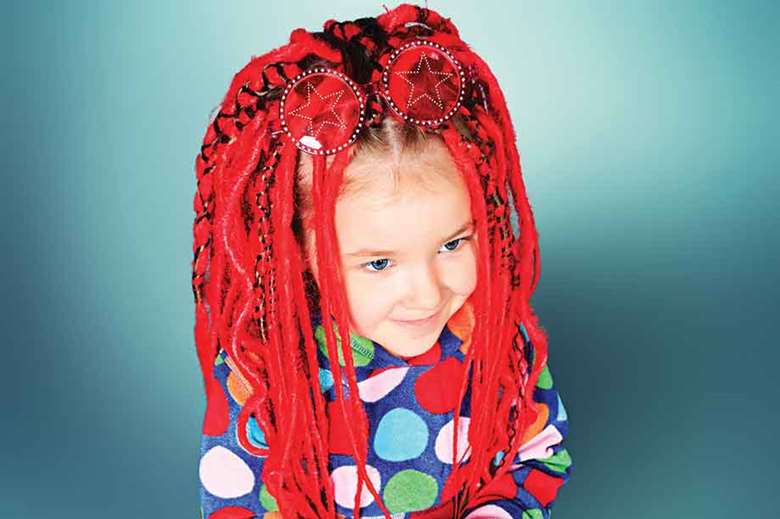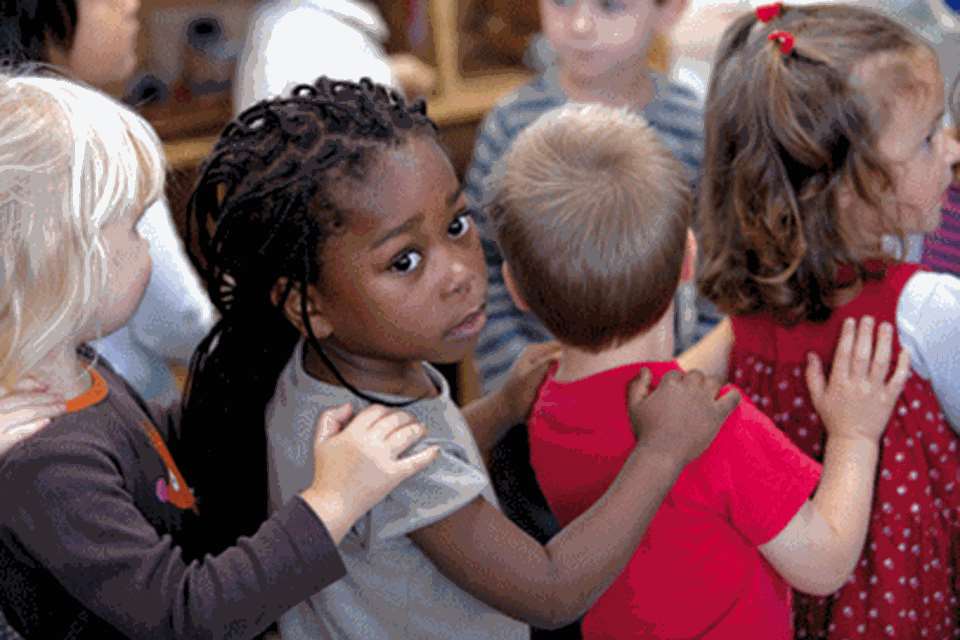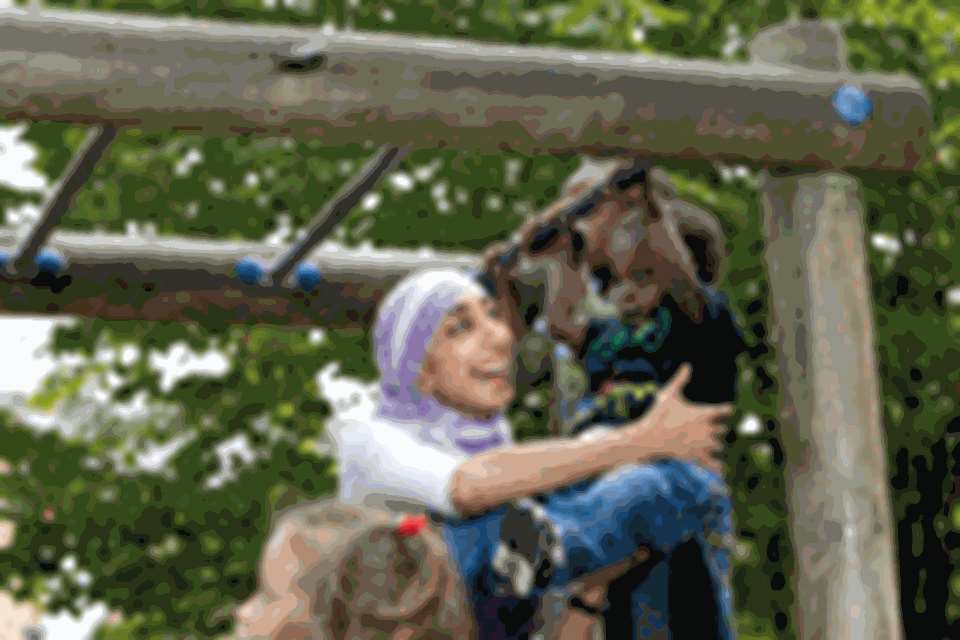A Unique Child: Inclusion - Here’s the rub
Caroline Vollans
Monday, February 20, 2017
Introducing children to other cultures should be fun, but there are serious issues that practitioners need to consider first, explains Caroline Vollans

Over the recent two to three decades, many schools and educational settings have prided themselves on celebrating cultural diversity and multiculturalism. Experiences and activities based on the cuisine, dress, religion, folklore and art forms of various cultures have been central to good educational provision, promoting awareness and tolerance of other communities.
Over the past few years, however, we have begun to hear a lot about an issue that demands we re-examine much of this and call it into question: cultural appropriation.
DEFINITIONS
In short, cultural appropriation is generally understood as when somebody adopts or borrows aspects of a culture that is not their own. However, this is a too simplistic and potentially misleading definition.
There are two necessary components of cultural appropriation. The first of these is dominance or a power relation. The culture being appropriated is in a subordinate position: members of the dominant culture take aspects from a culture of people who have been oppressed by that dominant group. So, there is an inequality between the groups.
The second is that of understanding or, more accurately, not understanding: the unique origins of the cultural aspect being borrowed are not recognised and attributed to it. Cultural context is overlooked, negated.
A more accurate ‘in short’ definition of cultural appropriation is: a borrowing of the powerful or dominant group from the minority group, often without understanding the latter’s history, experience and traditions.
Appropriation, as the word suggests, is different from appreciation. Cultural appreciation is learning about another culture with respect. It is appreciating it enough to take time to go to the necessary lengths to become knowledgeable about it. Appreciation, necessarily, gives priority to the context of the cultural features at stake.
In addition to these is the concept of cultural exchange. This is when there is a mutual sharing between cultural groups. The difference between this and appropriation is that there is an equality of power between the groups involved.
AN EXAMPLE
In the 1950s, when black African Americans continued to be marginalised and oppressed in society, white musicians replicated their sounds and style, and out of this grew rock ’n’ roll. This style of music is now largely associated with white artists despite the fact that it has its roots in black music. The black musicians who paved the way received no status, merit or financial gain.
This example clearly highlights the problem with cultural appropriation in that the ‘borrowing’ was from a minority group who were, in fact, robbed of the credit they deserved.
Miley Cyrus, in 2013, famously performed her ‘twerking’ dance surrounded by black people. Twerking was influenced by the New Orleans bounce music scene and can also be traced back to traditional West African dance forms. Cyrus said she wanted it to be ‘urban – something that feels black’. Cyrus, who grew up in the US steeped in white privilege, was playing with an aspect of black culture, trying it on. Once off-stage she would resume her life of white privilege. Contrary to this, those from whom she borrowed her routine would continue to face stereotyping, prejudice and oppression.
Though cultural appropriation can be blatantly visible in the music industry, taking aspects of a certain culture without understanding or respecting it occurs within the fashion community too. Saris, burkas, hijabs, dreadlocks, bindis or cornrows are all stolen or ‘borrowed’ from cultures and religions all for the sake of trendy or edgy fashion. However, while it may be cool to try on dreadlocks, it remains a reality that Tiana Parker, a seven-year-old girl, was forced to move schools when forbidden for wearing them – the way her hair grew naturally. She was told that her hairstyle was not ‘presentable’. Can dreadlocks be seen as presentable if we use them as a costume? A costume can be taken off – the wearer does not have to live with the everyday prejudices.
WHERE TO START
All of this can be confusing and it is hard to know how to begin thinking about these issues. Many of us live in big cities with people from hundreds of different ethnicities, and many of our schools reflect this. It is inevitable that cultural groups rub off on each other, picking up on each other’s customs, religions, traditions and habits. When is this ‘cultural appreciation’ and exchange, and when is it ‘cultural appropriation’?
Kat Lazao, in Everyday Feminism, points out that even if we do not think we are doing something racist we can still, unintentionally, be perpetuating racism. Lazao speaks about her own experience of having dressed up as an Indian girl and a Geisha without thinking about the effect that her costumes would have on Native American or Japanese women. She puts this down to the fact that such implications did not affect her.
For Lazao, racism is deeply ingrained in our history and our society. It can be hard to recognise and accept that if we are well intentioned we can still have a negative impact and, indeed, be offensive to a particular group of people.
IN PRACTICE
We are all familiar, particularly so in the early years, with dressing up. Costumes for the home corner, role play or various multicultural activities have become commonplace in educational settings on the grounds of celebrating cultural diversity. To put this to question might be seen as political correctness gone mad, or as simply being a spoil sport. Cultural appropriation can, indeed, bring new learning experiences into the classroom. The activities are often appealing, colourful and diverse.
However, if we are to be culturally and racially sensitive and respectful, we need to prioritise context – from where did the activity arise? Dr Richard Bay, professor of art education at Radford University in Virginia, US, says, ‘It’s hard to embrace the vast knowledge necessary to learn about a culture. It’s easier for teachers to pick up a “cookie-cutter” pattern or lesson plan and say it’s done the job.’ He goes on to say that when teachers take care to respect the context of the particular cultural aspect and to give value, significance and respect to it, then the message conveyed is not that it is OK to steal from another culture.
WORKING WITH FAMILIES
Early years practitioners need to reflect carefully on these issues. First of all, artefacts, clothing and other objects from different cultures should not be introduced without some initial thought. If the aim is simply to introduce something a bit ‘different’ or exotic, then the introduction of those new resources will do nothing to promote racial equality or intercultural understanding. In fact, the opposite might result – so, for example, when an early years setting bought some glittery jackets from a Pakistani market stall for its dressing-up collection, some of the Pakistani parents felt that the items of clothing which they might typically buy their boys to wear on Eid had been devalued as ‘costumes’.
On the other hand, if children are helped to understand context, culture and background, then coming into contact with different resources in their early years setting can help them to expand their horizons. Instead of just buying traditional Indian stainless steel bowls and dishes for the home corner, why not first introduce the children to how they are used by visiting a restaurant or a family home?
When children have seen how things are used in real-life situations, their play will be much richer – and so will their learning.
Finally, because we so often want to do the right thing, and be sensitive, we can end up becoming afraid of asking questions in case they cause offence. But questions are actually the best way towards understanding – especially in situations where many staff come from different ethnic or cultural groups from those of the children and families.
Why not ask parents what they think of the resources that you offer the children for role play and dressing up, and whether parents have any suggestions to improve the resources so that they better reflect the diversity of the local community? In areas that are not ethnically diverse, it is also important for children to learn about other cultures, and to learn that not everywhere in the UK is like their local area.
The integral accusation of racial insensitivity or ignorance makes cultural appropriation a delicate one to approach. Defensiveness and resistance can ensue: ‘Of course we’re not being offensive when we do that.’ It is, then, even more important that educators do not side-step this but open it up as an issue, reflect on it and engage with it.
MORE INFORMATION







